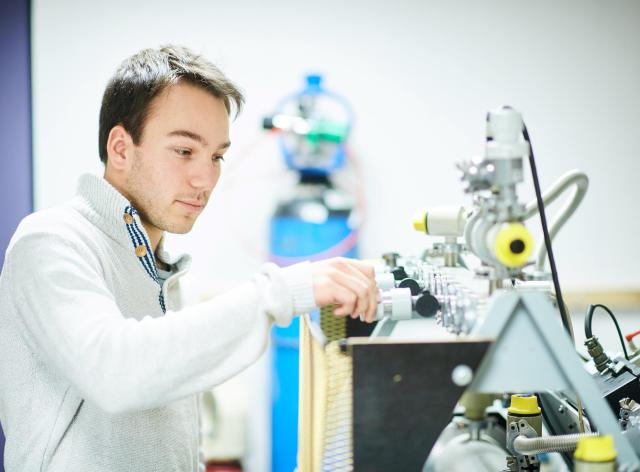Main topics
- Plasmonic electrochromic materials
- Surface exalted spectroscopies (SERS - SEIRA)
- Heterostructures of 2D materials
- STM images of 2D materials
- Material growth and atomic diffusion
Electrochromic plasmonic materials
The electrochromism is the property that enables reversible modulation of the optical properties of materials.
Plasmonic electrochromism opens up prospects for acting independently on visible and infrared responses to enable differentiated management of light and heat in buildings.
In this context, through electrodynamic and first-principles approaches our work focuses on
- The effect of defects on the optical responses of doped semiconductor nanostructures (ITO, WO3, MoO3, ...) by quantum electronic structure approaches associated with artificial intelligence.
- The electrodynamics of organic/inorganic hybrid materials
- The mechanisms of charge transfer between systems.
Fig 1: Effect of ITO nanoparticle dilution on diffuse reflectivity measurement (Lobet et al. ACS Appl. Opt. Mat. 2025)

Exalted surface spectroscopy (SERS - SEIRA)
Compound trace detection plays a crucial role in industrial and medical applications. Vibrational spectroscopies (Raman and Infrared) are valuable tools, but suffer from poor response. Coupling with plasmonic systems makes it possible to decouple (exhale) these responses.
In this context, our work focuses on the fundamental mechanisms enabling fine analysis of these spectroscopies and the exact role of electromagnetic field amplification and density of states through electrodynamic and first-principles approaches.
Figure 2: Loss function of corrugated graphene (Dobrik et al. Nature Nano 2022)

Figure 3: Schematic representation of the exaltation effect of plasmonic particles on Raman spectroscopy (SERS-right) and electromagnetic 'hot spot' between two metallic nanocylinders (right) (from Colleu et al. J. Phys.: Photonics 2024)

2D material heterostructures
Figure 4: A modulation of 2D material properties is possible by forming heterostructures, i.e. stacks of successive layers of identical or different materials. In this context, we develop both effective medium approaches to account for the anisotropy effects characteristic of these compounds and study the electronic effects of the stacks by first-principles approaches.
Figure 4: Different models for studying the optical properties of 2D materials (Majerus et al. PRB 2023)

Figure 5: Effect of stacking on the electronic band structure of bilayer graphene (S. Latil. PRB 2007)

STM images of 2D materials
STM images of 2D materials (doped graphene, MoTe2, nanorubban) are simulated by first-principles (DFT) or strong-bond (TB) approaches.
Figure 6: Simulated STM images of graphene nanoribbons described in a TB+U model. Effect of parameter U and approximation level (MF / Medium Field or GW). (de Honet J. Phys: Condens Matter, 2023)

Figure 7: STM images of nitrogen-doped graphene. Ab initio simulation (left) and experiment (right) under different conditions (F. Joucken et al. Phys. Rev. Mat. 2019)

Material growth and atomic diffusion
Atomistic simulations of chemical reactions or diffusions of atoms or clusters of atoms in the context of diamond, graphene and BN layer growth.
Figure 8: Minimum energy path of an H2 molecule interacting with an unpassivated diamond surface (Guillaume et al. Carbon 2024)



